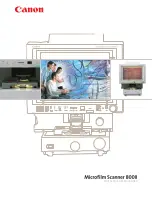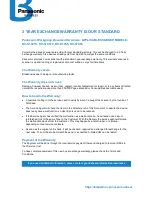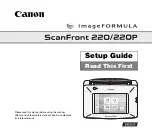
1. OVERVIEW
Matrix
II MF-I
RFID
reader is used in Access Control Systems (ACS) to acquire codes from
approached Mifare tokens (cards, key fobs, bracelets etc.) and transmit them to controllers via
iButton
(Dallas Touch Memory) or Wiegand protocols.
A distinctive feature of this model is the support of IronLogic Protected technology, to reliably protect
cards against cloning (see more details on www.ironlogic.
me
website). This technology, in addition
to a Matrix
II MF-I
RFID
reader requires: a Z-2 USB MF
Desktop
reader (with modified firmware),
IronLogic Object Card(s) and
Mifar
e
cards or key fobs to make access cards.
2. MOUNTING AND CONNECTION
The reader should be mounted on a flat surface, in a place allowing unimpeded proximity card
access to the reader.
To mount the reader, perform the following operations:
1. Mark and drill the mounting holes of the same size as the reader case holes (Fig. 1)
2. Connect wires to the reader socket, according to layouts on Fig. 4 and Fig. 5.
3. Break out a thin tab in the case from the side where the cable must come out (Fig. 3),
and feed the cable through. When the power is connected to the
reader,
the red LED will
come up.
4. Mount the reader in the desired place and fix it with screws.
5. Close the reader case openings with plugs (Fig. 2).
Note 1: Do not install readers closer than 10 cm
one
from another.
Note 2: To avoid electrical interference when connecting the reader to the controller, a UTP
cable is recommended, such as CAT5e UTP cable (see Fig. 5).
3. OPERATION
Reader operation without external indication control:
1. When power is supplied, in standby mode (no card in working zone), the LED shines red.
2. On card approach, its number is acquired. If done successfully, the LED turns green for a
short time, then switches off, at the same time a short beep also sounds.
3. While the card remains within the reader working zone, the LED stays off.
External indication control for red/green colours of the LEDs and the buzzer is done by shorting
the corresponding terminal (LED R, LED G, BEEP) to the common ground terminal (GND).
External indication control can be used in parallel with internal indication control; by default, the
LED and the buzzer are internally controlled. After external indication control signal has been
activated for one of indication modes (for example, for the LED), that mode becomes externally
controlled, while the other (in this example, the buzzer) remains under internal control.
Page 1
Matrix
II MF-I
Mifare 13.56MHz RFID reader
with connection via iButton / Wiegand-26 protocols
User Manual
MATRIX II MF-I
www.ironlogic.
me
























